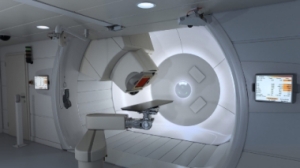by
Gus Iversen, Editor in Chief | February 03, 2016
As more and more health care institutions consider the viability of providing proton therapy to their patients, new research has emerged to further cement the notion that, where young lives are concerned, there is no better option currently available.
Owing to the diminished frequency and severity of side effects from treatment, a new study published in the journal
Lancet Oncology has determined that outcomes from medulloblastoma — the most common malignant brain tumor in children — are best when proton therapy is used.
The research, conducted by a Massachusetts General Hospital (MGH) team led by Dr. Torunn Yock, the facility's director of Pediatric Radiology, illustrated that proton therapy enables comparable survival rates to conventional radiation therapy while exposing the child's healthy tissue to a lower dose of toxicity and improving the patient's chances of living a long life unhampered by complications and side effects.



Ad Statistics
Times Displayed: 60894
Times Visited: 1960 Ampronix, a Top Master Distributor for Sony Medical, provides Sales, Service & Exchanges for Sony Surgical Displays, Printers, & More. Rely on Us for Expert Support Tailored to Your Needs. Email info@ampronix.com or Call 949-273-8000 for Premier Pricing.
A three-room ProteusPLUS proton therapy system from IBA was installed at MGH in 2001 at the Francis H. Burr Proton Center, (and
an additional system from ProTom International is under construction).
Medulloblastoma develops at the rear and base of the brain, near the bottom of the skull. They are rapidly growing tumors that spread through the cerebrospinal fluid to different locations along the surface of the brain and spinal cord. In order to shed light on the clinical value of proton therapy in treating the disease, Dr. Yock and her team enrolled 59 patients between ages 3 and 21 into a clinical study between 2003 and 2009. Of those 59 patients, 55 had their medulloblastoma tumors partially removed through surgery and all 59 received proton therapy and chemotherapy.
Conventionally, these cases are treated with a combination of surgery, radiation therapy and chemotherapy — while that recipe is often sufficient for resolving the mortal threat of the brain tumor, it can also pave the way to myriad side effects that can compromise the patient's quality of life. The younger they are, according to the researchers, the worse the long-term effects can be.
The more common treatment side effects include hearing loss and effects on cognition and hormone function, as well as toxic effects on the heart, lungs, thyroid, vertebra and reproductive organs.
After three years, 12 percent of patients reported serious hearing loss and 83 percent reported progression-free survival. Patients also displayed problems with processing speed and verbal comprehension, but perceptual reasoning and working memory were not significantly affected.

